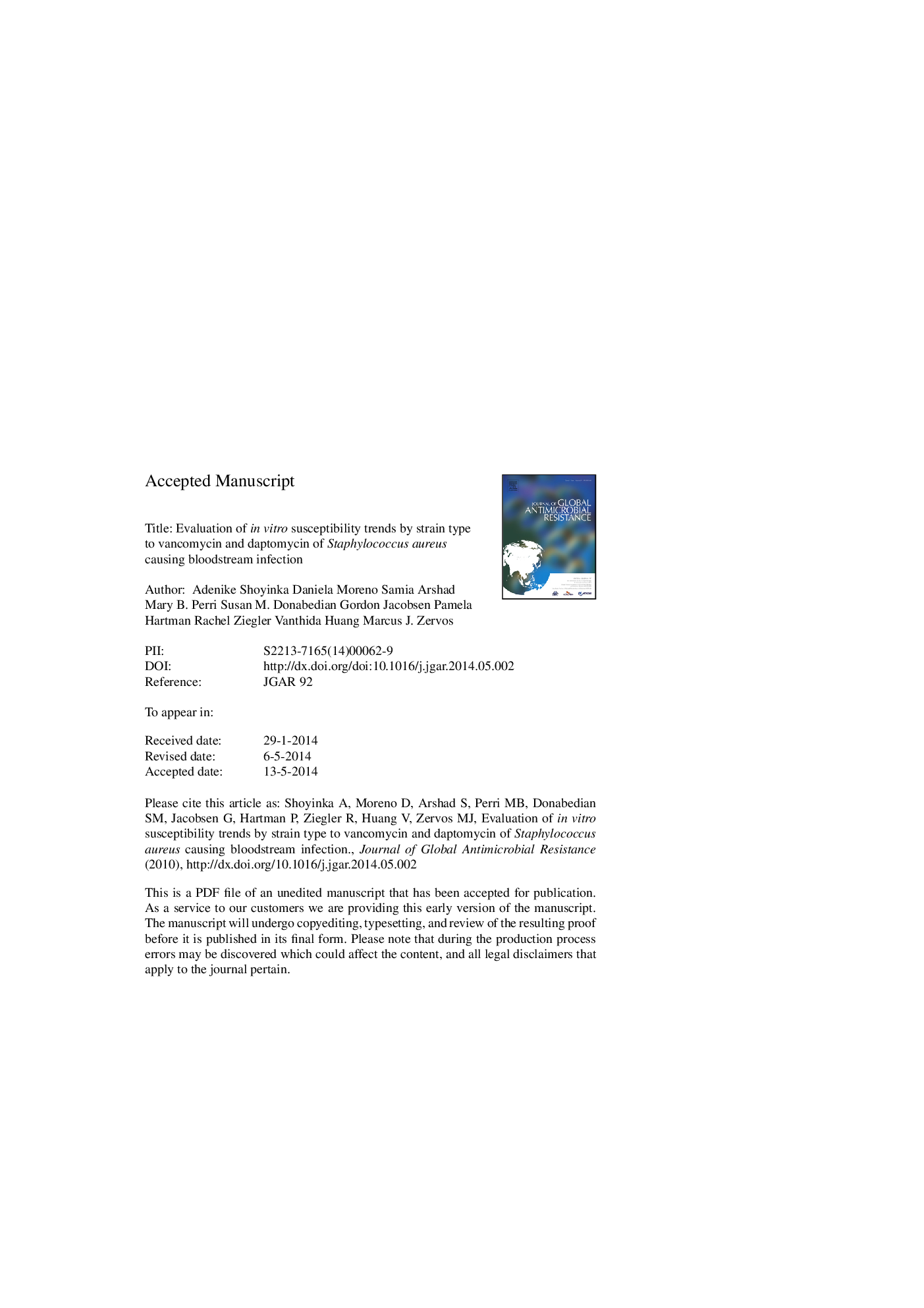| Article ID | Journal | Published Year | Pages | File Type |
|---|---|---|---|---|
| 10169940 | Journal of Global Antimicrobial Resistance | 2014 | 23 Pages |
Abstract
In total, 718 consecutive clinical meticillin-resistant Staphylococcus aureus (MRSA) isolates from 2006 to 2010 and 417 clinical meticillin-susceptible S. aureus (MSSA) isolates from mid-2007 to 2010 were evaluated. Isolates were from blood cultures obtained from separate patients in Detroit, MI, and were tested for in vitro susceptibility trends to vancomycin and daptomycin by molecular strain type. The MRSA pulsed-field gel electrophoresis (PFGE) results showed that 290 (40.4%) were USA100, 296 (41.2%) were USA300 and the remaining isolates were non-USA100/300. Vancomycin minimum inhibitory concentrations (MICs) by Etest [mean ± standard deviation (S.D.) 1.55 ± 0.26 mg/L] in MRSA isolates showed no significant change over the 5-year period within all strain types, whilst daptomycin MICs by Etest (mean ± S.D. 0.51 ± 0.25 mg/L) showed a significant downward trend across time (r = â0.243; P < 0.001), with this trend occurring among all PFGE groups. For MSSA, a significant decrease in MICs to vancomycin was found by Etest (r = â0.160; P = 0.001) and conversely a significant increase in daptomycin MICs by Etest was found (r = 0.146; P = 0.028). The results of this study showed that changes in MIC were not specific to strain molecular type. For vancomycin, there was no change in MRSA MICs and a decrease in MSSA MICs for blood isolates. For daptomycin, MICs decreased in MRSA and increased in MSSA blood isolates over the study period.
Related Topics
Life Sciences
Immunology and Microbiology
Applied Microbiology and Biotechnology
Authors
Adenike Shoyinka, Daniela Moreno, Samia Arshad, Mary B. Perri, Susan M. Donabedian, Gordon Jacobsen, Pamela Hartman, Rachel Ziegler, Vanthida Huang, Marcus J. Zervos,
